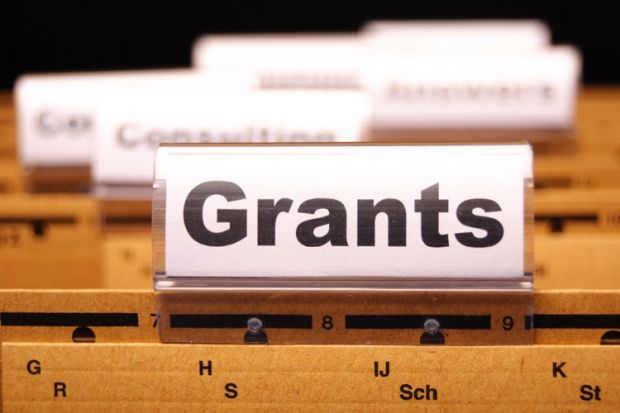Science and Technology Facilities Council
Research grants
- Award winner: Darren Baskill
- Institution: University of Sussex
- Value: £6,116
The Ensonglopedia of Science
- Award winner: Rob Appleby
- Institution: University of Manchester
- Value: £90,679
Tactile collider: an interactive event for the blind and partially sighted
- Award winner: Martin Archer
- Value: £8,500
- Institution: Queen Mary University of London
Cosmic ray muon research in schools
National Institutes of Health Research
Research project grants
Health Services and Delivery Research
- Award winner: Barbara Hanratty
- Institution: Newcastle University
- Value: £533,274
Organising general practice for care homes: a multi-method study
- Award winner: Gina Higginbottom
- Institution: University of Nottingham
- Value: £151,169
Interventions that improve maternity care and access for immigrant women in England: a narrative synthesis systematic review
Efficacy and Mechanism Evaluation
- Award winner: Patricia Gooding
- Institution: Manchester Mental Health and Social Care Trust
- Value: £1,354,184
A psychological intervention for suicide applied to patients with psychology: the CARMS trials (cognitive approaches to remedying suicide)
- Award winner: Philippa Garety
- Institution: King’s College London
- Value: £1,300,255
A randomised controlled trial to evaluate the outcomes and mechanisms of a novel digital reasoning intervention for persecutory delusions
Biotechnology and Biological Sciences Research Council
Research grants
- Award winner: Julian Hibberd
- Institution: University of Cambridge
- Value: £2,860,520
Activation of non-photosynthetic leaf cells for improved productivity
- Award winner: Dmitry Filatov
- Institution: University of Oxford
- Value: £363,625
Evolution of dosage compensation on recently evolved sex chromosomes
- Award winner: Karl Swann
- Institution: Cardiff University
- Value: £472,355
Lipid droplets in oocytes: shedding new light on why fats are good or bad for development
In detail
National Centre for the Replacement, Refinement and Reduction of Animals in Research
Fellowship
Award winner: David Turner
Institution: University of Cambridge
Value: £215,335
The establishment of left-right asymmetry in mammalian development
Humans and other mammals appear symmetrical, but under the skin are asymmetrical. The heart, for instance, is found on the left side of the body. Scientists do not yet understand the evolutionary reasons for our internal left-right asymmetry or the mechanisms behind its development. It is known that some conditions – including birth defects – can result from gene mutations that affect asymmetry, and therefore it would be helpful to understand the mechanisms by which asymmetry arises. At present, development of asymmetry can be studied only using expensive animal models. David Turner has created a new experimental method to study left-right asymmetry: this will involve growing, stimulating and multiplying the embryonic stem cells of mice until they show some embryonic characteristics. He will use these “gastruloids” to investigate the mechanisms that lead to left-right asymmetry in mammals.
